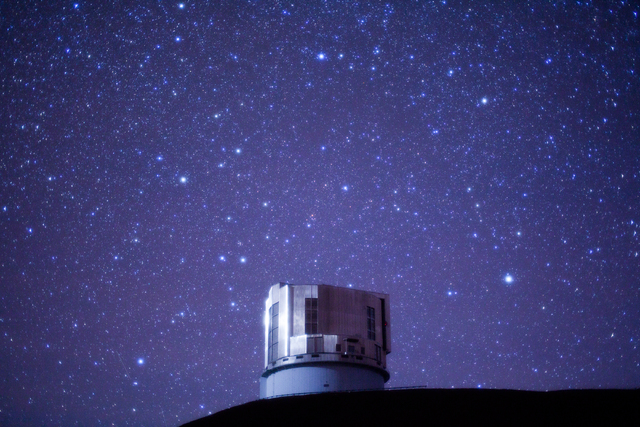HILO — More than 3,000 planets have been discovered in other solar systems, but there’s still a lot that’s unknown about their composition — including whether they have the ingredients for life.
A new instrument installed at the Subaru Telescope atop Mauna Kea could begin pulling back that curtain.
The telescope, ran by the National Astronomical Observatory of Japan, says its new spectrogaph allows astronomers to better separate light from exoplanets and their host star, and will allow them to measure both temperature and atmospheric conditions on some of these distant worlds.
“With this, we hope to be able to understand basically what types of planets form around various stars and how many are out there,” said Subaru astronomer Nemanja Jovanovic.
The telescope announced last week the instrument, known as Coronagraphic High Angular Resolution Imaging Spectrograph, reached first light. Subaru says it’s the product of a long-term collaboration with Princeton University, the Japan astronomical observatory and the University of Tokyo.
It will be available for research beginning in February.
Jovanovic said the instrument also will allow for more direct imaging of exoplanets, which are mostly detected through the effect they have on their host star.
As the observatory noted in a press release, “It is a bit like picking out a home-run baseball going behind a floodlight from hundreds of miles away.”
Jovanovic said researchers will use it to study larger exoplanets that are more easily detected, but are less likely to contain water.
This type of research on smaller, potentially Earth-like worlds, will likely have to wait for the more powerful next-generation observatories, such as the Thirty Meter Telescope, he said.
In addition to expanding our knowledge of the universe, the research will help astronomers better understand our own solar system and whether or not it’s unique, Jovanovic said.
“This really is the ultimate question: How unique are we in the universe and are we alone?” he added.
Email Tom Callis at tcallis@hawaiitribune-herald.com.



